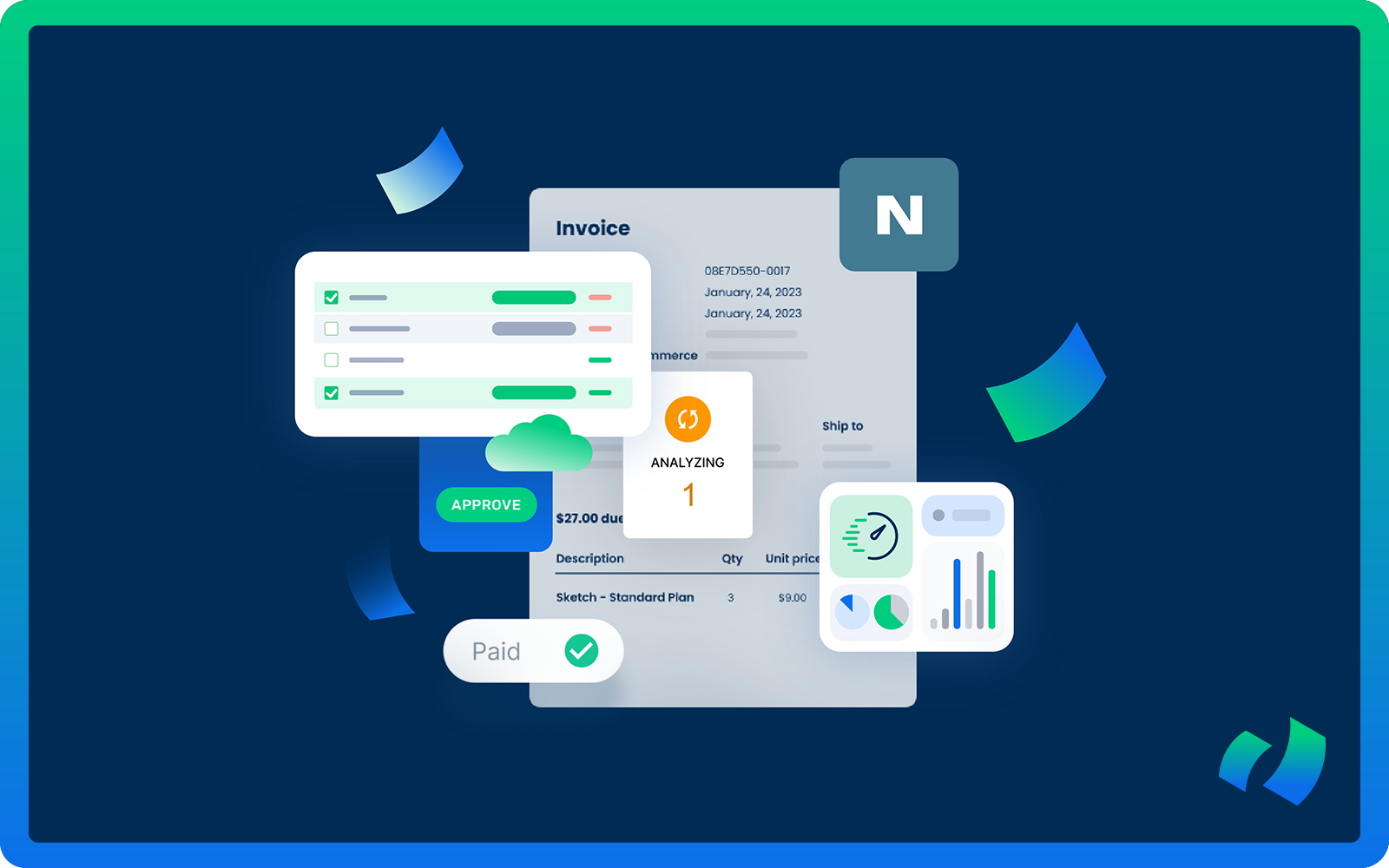Automated invoice processing is revolutionizing the way small businesses handle their accounts payable and receivable. As the name suggests, it automates the process of generating, sending, receiving, and processing invoices, which traditionally has been a labor-intensive and error-prone task. This shift from manual to automated offers a plethora of advantages that can be particularly beneficial for small businesses operating with limited resources and personnel.
For small businesses, where every minute counts and resource allocation is crucial, adopting automated invoice processing can lead to significant time savings, reduced errors, and improved cash flow management. By minimizing the need for manual data entry and oversight, businesses can free up valuable time for employees to focus on more strategic tasks, thereby increasing overall productivity.
However, the decision to automate invoice processing is not without its considerations. Small businesses must weigh the initial investment in technology and training against the potential long-term benefits. While the upfront costs can be a deterrent, the return on investment can be substantial in terms of efficiency gains and cost savings over time. Furthermore, automated systems often come with advanced features such as real-time tracking, reporting capabilities, and integration with other financial software, which can further streamline operations and provide deeper insights into financial performance.
The question of whether small businesses should automate their invoice processing is fundamentally one of strategic foresight. In an increasingly competitive marketplace, the ability to operate efficiently and accurately can provide a significant edge. Moreover, automation can help small businesses scale their operations more seamlessly as they grow, accommodating increased transaction volumes without a corresponding rise in manual workload.
Let’s explore the various aspects of automated invoice processing, its benefits, challenges, and the best practices for small businesses to implement this technology effectively. By understanding the full scope of what automated invoice processing entails, small business owners can make informed decisions about whether this technology is a worthy investment for their operations.
Challenges of Invoice Processing for Small Businesses
Invoice processing is a critical function for any business, but it comes with several challenges, particularly for small businesses that may lack the resources and manpower of larger organizations.
Here are some common challenges:
- Manual Data Entry
One of the most significant challenges is the reliance on manual data entry. This process is not only time-consuming but also prone to human error. A single mistake can lead to incorrect payments, accounting discrepancies, and strained vendor relationships.
- High Volume of Invoices
As businesses grow, so does the volume of invoices they need to process. For small businesses, handling a high volume of invoices can become overwhelming, leading to delays in payments and potential cash flow issues.
- Lack of Standardization
Invoices come in various formats and from multiple sources, making standardization a challenge. Without a consistent process, it becomes difficult to track, manage, and reconcile invoices efficiently.
- Approval Bottlenecks
The approval process for invoices often involves multiple stakeholders, leading to delays. In small businesses where staff may wear multiple hats, finding time to approve invoices can be challenging, further slowing down the process.
- Storage and Retrieval Issues
Physical storage of paper invoices can quickly become unmanageable. Retrieving past invoices for reference or audits can be a daunting task, leading to inefficiencies and potential compliance issues.
- Fraud and Security Risks
Manual invoice processing can expose small businesses to fraud and security risks. Without proper controls, fraudulent invoices can slip through, and sensitive financial information can be compromised.
How Small Businesses Can Streamline Invoice Processing
The easiest, and the most obvious, solution is to use a tool that automates this entire process – for example DOKKA.
DOKKA can streamline invoice processing by eliminating manual data entry and reducing errors.
Standardizing invoice formats and utilizing cloud-based software like DOKKA ensures consistency and facilitates real-time collaboration. Integrating with accounting ERPs also helps with reconciliation and reporting later on in the accounting cycle.
Adopting automated invoice processing software offers significant benefits for small businesses, but it is essential to choose the right solution that aligns with their needs and budget. Here are steps to consider for proper planning and implementation:
- Assess Current Processes
- Choose the Right Software
- Train Staff
- Customize Workflows
- Monitor and Optimize
- Streamline Other Operations
1) Assess Current Processes
Evaluate the current invoice processing workflow to identify bottlenecks, inefficiencies, and error-prone areas. This assessment guides the selection and configuration of an automated solution tailored to address specific pain points.
2) Choose the Right Software
Select automated invoice processing software that offers features like OCR, workflow automation, and seamless integration with existing accounting systems. Consider factors such as usability, scalability, and cost-effectiveness.
3) Train Staff
Provide comprehensive training sessions and resources to ensure that staff can effectively use the new system. Address any resistance to change by highlighting the benefits and capabilities of the automated solution.
4) Customize Workflows
Configure the software to align with the business’s unique workflows. Define approval hierarchies, establish rules for data validation, and customize notifications and reminders to optimize efficiency.
5) Monitor and Optimize
Continuously monitor the performance of the automated system, gather user feedback, and identify opportunities for improvement. Regular updates and optimizations ensure the system continues to meet evolving business needs.
6) Streamline Other Operations
Explore automation opportunities beyond invoice processing, such as payroll, inventory management, and CRM systems. Integrating these automated processes creates a cohesive and efficient business environment.
Key Benefits of Automating Invoice Processing for Small Businesses
For small businesses, where every minute and resource is precious, automated invoice processing can be a game-changer.
It offers significant time savings, reduces errors, and enhances cash flow management. By eliminating the need for manual data entry and oversight, businesses can allocate valuable time to strategic tasks, boosting overall productivity.
Automating invoice processing provides numerous advantages that positively impact small businesses. Here are some of the key benefits:
- Time Savings: Automated software significantly reduces the time required to process invoices. By eliminating manual data entry and approval bottlenecks, businesses can process invoices faster and more efficiently. This time savings allows for a focus on strategic activities that drive business growth.
- Reduced Errors: Manual data entry is prone to errors, leading to payment discrepancies and financial inaccuracies. Automated invoice processing solutions minimize errors by accurately capturing and validating data. This improvement enhances the accuracy of financial records overall.
- Improved Cash Flow Management: Timely invoice processing is crucial for maintaining healthy cash flow. Automated solutions ensure invoices are processed quickly, enabling businesses to capitalize on early payment discounts and avoid late payment penalties. This capability enhances financial stability and flexibility.
- Enhanced Vendor Relationships: Efficient invoice processing fosters better relationships with vendors. Timely payments demonstrate reliability and professionalism, strengthening terms and partnerships. Automated solutions also provide transparency, allowing vendors to track invoice statuses.
- Better Compliance and Audit Readiness: Automated solutions store invoices electronically, facilitating compliance with regulatory requirements and audit preparedness. Digital storage solutions offer clear audit trails, enabling businesses to retrieve and present documentation swiftly and accurately.
- Scalability: As small businesses grow, invoice volumes increase. Automated solutions are scalable, accommodating higher volumes while maintaining efficiency. This scalability ensures streamlined invoicing processes as businesses expand.
- Cost Savings: Despite initial software investments, automated invoice processing yields significant long-term savings. Reduced labor costs, fewer errors, and improved cash flow contribute to overall cost efficiency. Additionally, eliminating paper-based processes reduces expenses related to printing, storage, and document management.
- Security and Fraud Prevention: Automated solutions feature robust security measures to protect sensitive financial information. Access controls, encryption, and audit trails mitigate unauthorized access and fraud risks.
Implementing automated invoice processing offers small businesses a strategic advantage, optimizing operations and fostering sustainable growth in competitive markets.
FAQ: Automating Invoice Processing for Small Businesses
What is automated invoice processing?
Automated invoice processing utilizes technology to capture, process, and manage invoices without manual intervention. It includes features like data extraction, validation, workflow automation, and integration with accounting systems to streamline the invoicing process.
What should small businesses consider when choosing automated invoice processing software?
When selecting automated invoice processing software, small businesses should consider features such as OCR capabilities, workflow automation, integration with accounting systems, ease of use, scalability, and cost. Proper training and customization are also crucial for successful implementation.
Can automated invoice processing handle different invoice formats?
Yes, automated invoice processing systems are designed to handle various invoice formats. OCR technology enables the extraction of data from paper invoices, PDFs, emails, and electronic invoices, ensuring efficient processing of all types.
How does automated invoice processing improve cash flow management?
Automated invoice processing accelerates the invoicing process, leading to prompt payments. This enables businesses to utilize early payment discounts and avoid late payment penalties, thereby enhancing cash flow management, financial stability, and flexibility.
Can automated invoice processing be scaled as the business grows?
Yes, automated invoice processing systems are scalable and can manage increased invoice volumes as the business expands. This scalability ensures the invoicing process remains efficient and streamlined regardless of business size.
What are the cost implications of implementing automated invoice processing?
While there is an initial investment in automated invoice processing software, the long-term cost savings are substantial. Reduced labor costs, decreased errors, improved cash flow, and elimination of paper-based processes contribute to overall cost efficiency.







